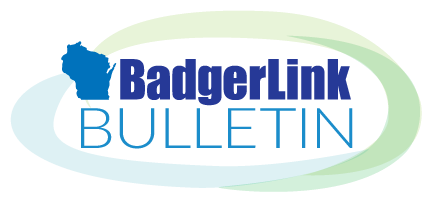BadgerLink Beginnings
 Partial screenshot from an early version of BadgerLink in February 2011, via the Internet Archive
Partial screenshot from an early version of BadgerLink in February 2011, via the Internet Archive
BadgerLink Funding
The BadgerLink Team
 The BadgerLink Team (Left to Right) Elizabeth Neuman, Kara Ripley, Gail Murray, Martha Berninger, Ben Miller
The BadgerLink Team (Left to Right) Elizabeth Neuman, Kara Ripley, Gail Murray, Martha Berninger, Ben Miller
Martha Berninger is the director of Resources for Libraries & Lifelong Learning, and she oversees the BadgerLink program and team
Ben Miller is the assistant director of RL&LL, and he provides oversight, technical support, and troubleshooting for BadgerLink
Elizabeth Neuman is the Technical Services Coordinator at RL&LL, and she maintains a close connection with vendors, provides technical support, and manages statistics for the BadgerLink program
Kara Ripley is the BadgerLink Training and Reference Librarian, and she answers research questions and coordinates training for Wisconsin organizations
Gail Murray is the Content Management & Outreach Librarian at RL&LL, and she provides technical support, outreach, and training for BadgerLink
Please contact the BadgerLink Team with any questions about the program’s history and funding, access issues, training requests, or for any other BadgerLink questions.

